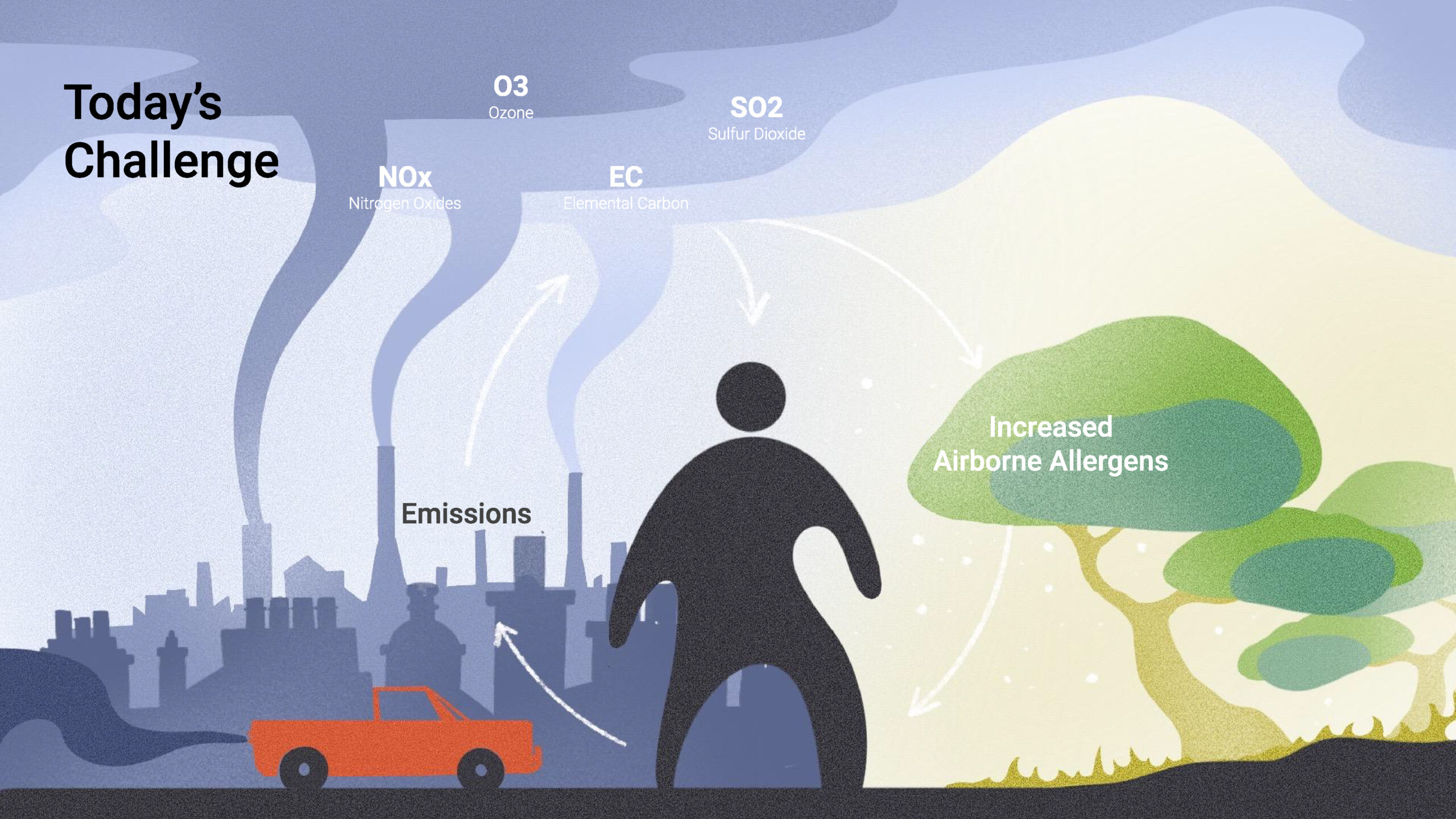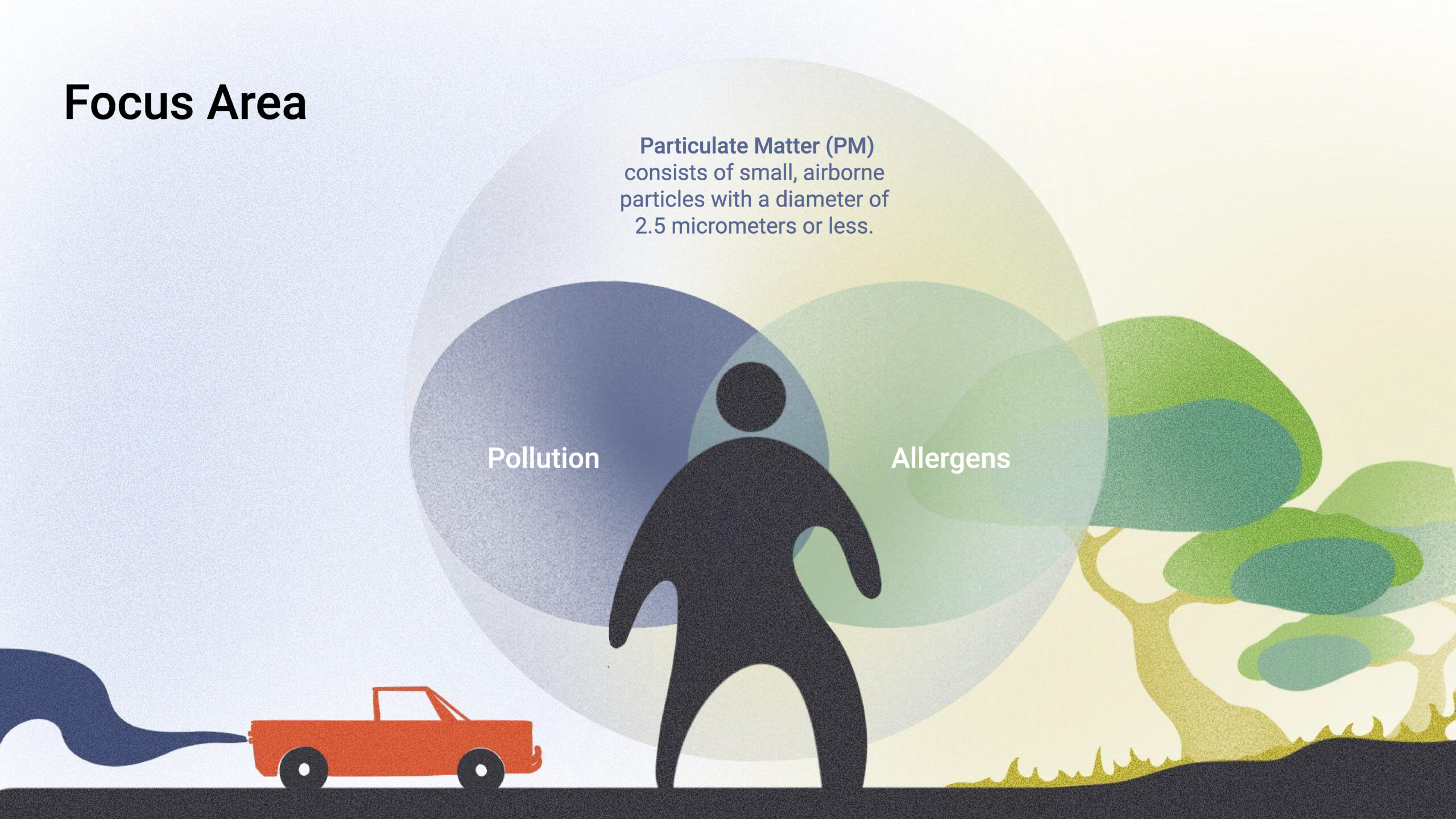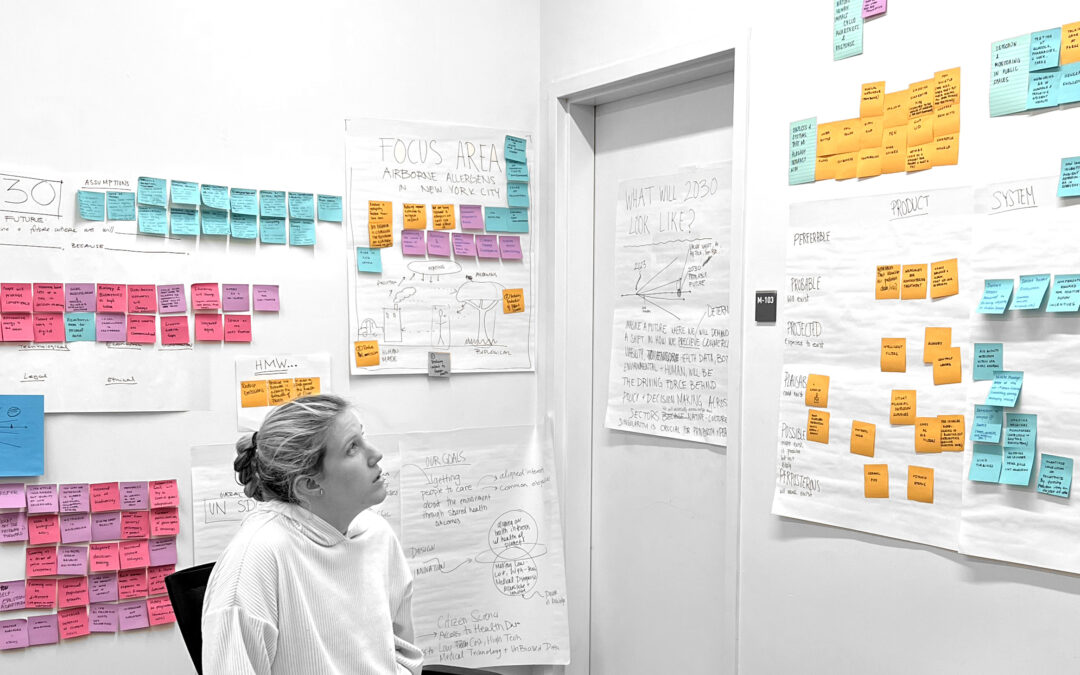
It’s important to understand the contexts of today in order to forecast the future. Our behaviors are impacting the planet, which in turn is impacting our health. The emission of particulate matter by humans is producing air pollution that’s heating our environment and changing the behavior of nature, causing longer and more severe pollination seasons. Here you can see that the left side of the slide represents human-made pollution, which in turn is impacting the right side, or nature-made pollution. We are at the center of both. This means that we are exposed to increased amounts of fungal spores and pollen as well as air pollution from urban emissions. Living in New York City, the shifting behavior of nature is mostly invisible to us, but that doesn’t mean it doesn’t impact us. The primary source of airborne allergens in NYC come from grasses and trees. Our behaviors are changing the environment. We cant adapt as quickly as nature can. Human and environmental health are interconnected and we can’t address one without addressing the other. We need to explore mitigative strategies to reduce our emissions while also adapting to our changing environment.

PM2.5 can penetrate deep into the lungs, causing inflammation of the airways, exacerbating lung and heart disease, increasing hospital admissions and contributing to premature mortality. Sources of PM2.5 include all types of combustion sources, including motor vehicles and boilers used for heating; the elemental composition of PM2.5 can vary by source and determine PM2.5 health effects. These particulates also lead to increased pollen production in plants & trees which creates airborne allergens. Rising levels of PM2.5 can boost the potency of common airborne allergens as a result of protein modification.


Recent Comments